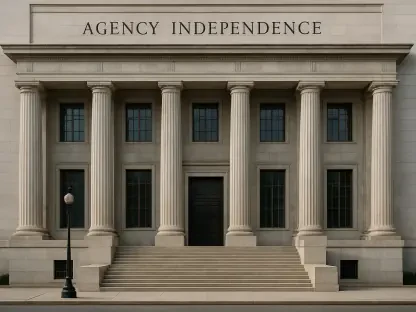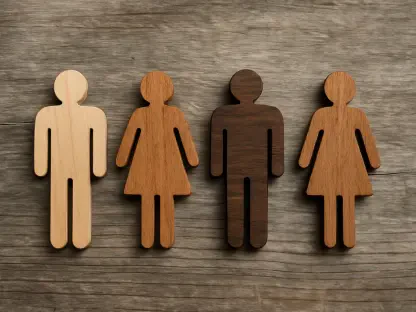In a landscape where workplace equality remains a contentious battleground, the recent Senate confirmation of Andrea Lucas as acting chair of the U.S. Equal Employment Opportunity Commission (EEOC) for a second term has sparked intense debate among policymakers, advocacy groups, and legal experts. Confirmed through a party-line vote on August 1, her tenure, extending until July 1, 2030, continues to shape the agency’s direction under a distinctly conservative lens. As a Trump appointee, Lucas has steered the EEOC through operational hurdles and ideological shifts, leaving an indelible mark on civil rights enforcement. Her leadership raises critical questions about the balance between ideological priorities and the agency’s mission to combat workplace discrimination. This exploration delves into the driving forces behind her polarizing approach, examining policy decisions, significant achievements, and the broader implications for the future of equal employment protections in the United States.
A Conservative Vision for Civil Rights Enforcement
Andrea Lucas’s alignment with a conservative civil rights agenda, heavily influenced by directives from the Trump administration, stands as a cornerstone of her leadership at the EEOC. Her public statements post-confirmation underscore a commitment to advancing a vision of “equal justice under the law” through concepts like “colorblind equality” and merit-based opportunity. This ideological framework has translated into tangible policy shifts within the agency. Notably, under her guidance, the EEOC has issued technical assistance documents that critique certain diversity, equity, and inclusion (DEI) programs as unlawful, marking a departure from previous inclusivity-focused initiatives. Furthermore, the agency has stepped back from litigation supporting transgender plaintiffs in job discrimination cases, prioritizing instead issues like women’s rights to single-sex spaces at work. These decisions reflect a broader trend of redefining civil rights enforcement to align with specific conservative values, often at the expense of other protected groups.
Beyond policy documents and litigation priorities, Lucas’s tenure reveals a focus on combating what she terms “anti-American bias” within workplace settings. Her emphasis on defending the “biological and binary reality of sex” aligns with recent executive orders and signals a deliberate pivot toward traditional interpretations of gender and equality. This stance has not gone without scrutiny, as it raises concerns among critics about the narrowing scope of protections offered by the EEOC. While some stakeholders applaud the clarity of her ideological position, others argue that it risks sidelining critical issues of discrimination that fall outside her defined priorities. The impact of this conservative shift is evident in the agency’s public messaging and legal strategies, which consistently emphasize merit and traditional norms over broader equity frameworks. As her term progresses, this vision will likely continue to shape the EEOC’s approach, potentially deepening divides over the role of federal agencies in addressing complex social issues.
Debates Over Agency Independence and Politicization
One of the most contentious aspects of Andrea Lucas’s leadership is her stance on the EEOC’s relationship with the White House, a position that has evolved over time. During her confirmation hearing before the U.S. Senate Committee on Health, Education, Labor and Pensions on June 18, she faced sharp questioning from Democratic lawmakers regarding the agency’s autonomy. Lucas asserted that she would adhere to lawful presidential directives, a reversal of earlier views on the EEOC’s independence. This perspective has fueled a broader debate about the politicization of federal agencies tasked with enforcing civil rights laws. Critics contend that such alignment with executive influence undermines the agency’s ability to impartially address discrimination cases, potentially skewing enforcement priorities based on political agendas rather than legal merit. The implications of this stance are profound, as they challenge long-standing norms about the separation of agency operations from direct presidential control.
Adding to the complexity, this issue of independence intersects with operational challenges that have marked Lucas’s tenure. The dismissal of two Democratic commissioners by former President Trump before their terms concluded left the EEOC without a quorum for a period, hampering its decision-making capacity. Congressional Democrats have also highlighted concerns over terminated leases at field offices in several states, as noted in correspondence earlier this year. These operational setbacks, combined with Lucas’s willingness to follow executive guidance, paint a picture of an agency grappling with both internal constraints and external pressures. The tension between maintaining impartiality and responding to political directives remains a critical fault line in her leadership, raising questions about how the EEOC can effectively serve its mission under such circumstances. As debates over autonomy persist, the agency’s credibility in handling sensitive discrimination cases hangs in a delicate balance.
Notable Achievements Amidst Criticism
Despite the controversies, Andrea Lucas’s leadership has yielded significant achievements that underscore the EEOC’s impact on specific civil rights issues. A standout accomplishment is the $21 million settlement with Columbia University to address violations against Jewish employees following the Hamas attacks on Israel in October 2023. Hailed as the largest EEOC settlement in nearly two decades and the most substantial ever for victims of antisemitism, this resolution highlights the agency’s capacity to tackle high-profile discrimination cases effectively. The settlement not only brought justice to affected individuals but also sent a powerful message about the EEOC’s commitment to combating specific forms of workplace bias. This success stands as a testament to Lucas’s ability to prioritize and resolve critical issues, even as broader criticisms of her leadership persist among various advocacy groups.
However, this achievement is juxtaposed against accusations of selective enforcement that have shadowed her term. Critics point to the EEOC’s refusal to pursue certain federal workplace protections, particularly for transgender workers, as evidence of a skewed focus. At least one lawsuit has emerged alleging that the agency has dropped cases involving transgender plaintiffs, prompting advocacy organizations to step in and represent those affected. This selective prioritization of civil rights issues has fueled a polarized reception of Lucas’s tenure, with some praising her targeted successes while others decry the neglect of equally pressing concerns. The Columbia University settlement, while a landmark victory, does not fully silence the voices questioning whether the EEOC under Lucas is fulfilling its mandate to protect all workers equitably. The balance between celebrated outcomes and ongoing critiques defines much of the public discourse surrounding her leadership.
Navigating Future Challenges in Civil Rights Enforcement
Looking ahead, Andrea Lucas’s second term at the EEOC is poised to deepen the ideological realignment initiated during her initial years as chair. Her commitment to specific conservative interpretations of civil rights, coupled with a readiness to align with presidential directives, suggests that the agency’s enforcement actions will continue to reflect a narrow set of priorities. Issues such as antisemitism and binary sex definitions are likely to remain at the forefront, potentially overshadowing other areas like transgender protections and DEI initiatives. This trajectory raises critical questions about the EEOC’s role in addressing the full spectrum of workplace discrimination. Stakeholders across the legal and advocacy spectrum are watching closely to see how her policies will evolve in response to emerging challenges and whether operational hurdles, such as field office closures, will be addressed to restore full functionality.
Reflecting on the path forward, it becomes evident that Lucas’s tenure will serve as a litmus test for the resilience of civil rights enforcement in a polarized political climate. Her past actions, marked by both significant settlements and contentious policy shifts, set the stage for ongoing debates about fairness and impartiality. The EEOC’s ability to navigate these turbulent waters will depend on finding ways to balance ideological commitments with the broader mission of protecting all workers from discrimination. As discussions unfold, the focus should shift toward actionable strategies—perhaps through enhanced transparency in decision-making or renewed efforts to rebuild operational capacity—that can bridge divides and reinforce the agency’s credibility. The legacy of Lucas’s leadership, shaped by past decisions, now hinges on how these future considerations are addressed to ensure workplace equality remains a tangible reality for all.









